Posts Tagged: Canyon
California Dogface Butterfly: What the Fire Did
You've probably seen California's state insect, the California dogface butterfly, on a first-class stamp, in a book, or on the UC Davis...
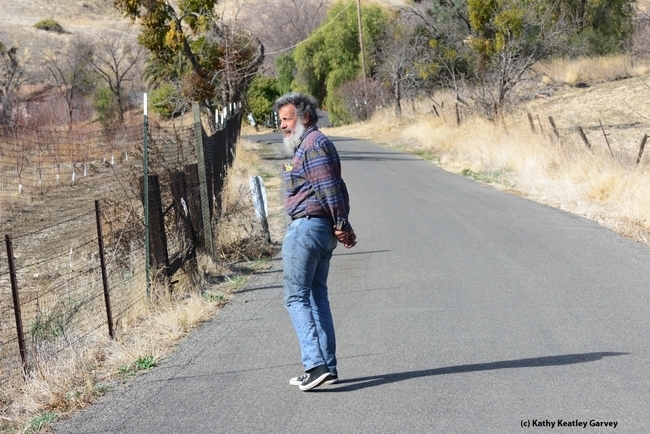
Butterfly guru Art Shapiro, UC Davis distinguished professor of evolution and ecology, walks up Gates Canyon in this image, taken in 2014. (Photo by Kathy Keatley Garvey)
What Do Honey Bee Colonies Do During a Raging Wildfire?
What do honey bee colonies do when a raging wildfire heads straight toward their hives (bee boxes)? No, the bees do not abscond with their queen and...
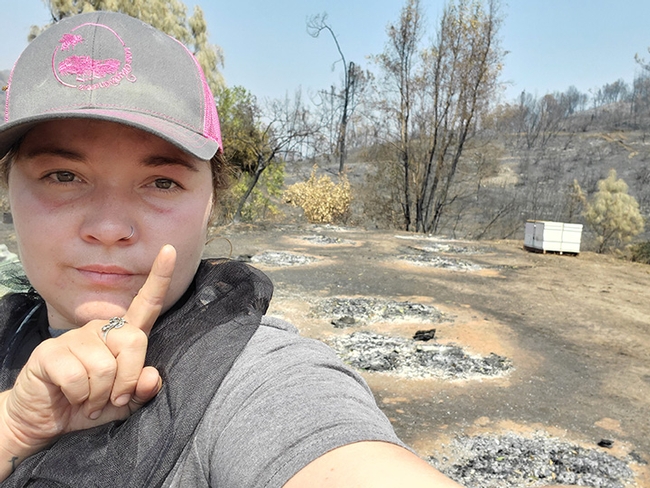
Caroline Yelle, owner of Pope Canyon Queens, lost some 500 hives during the Aug. 19 Vacaville fire. (Photo by Caroline Yelle)
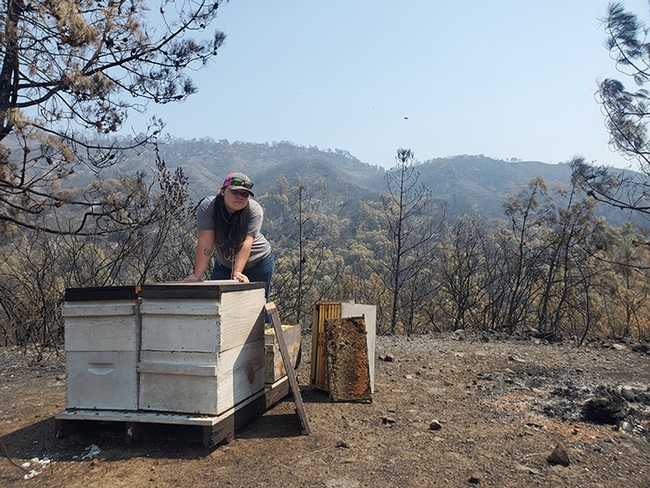
Caroline Yelle, owner of Pope Canyon Queens, checks her losses in the Aug. 19 Vacaville fire. (Photo by Caroline Yelle)
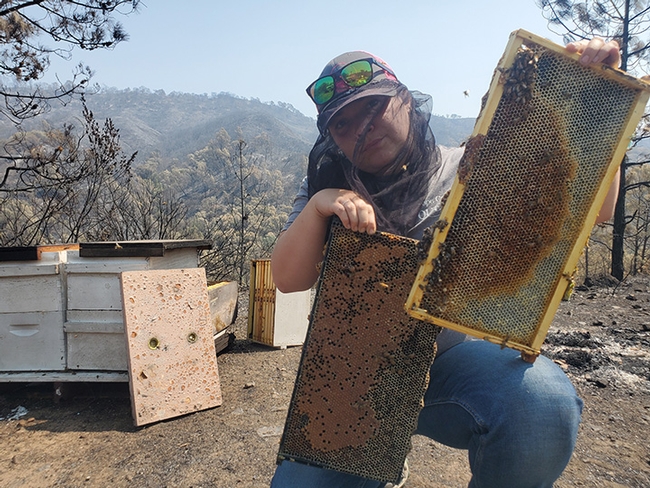
Dead brood and dying bees are in the half-burned hives belonging to Caroline Yelle, owner of Pope Canyon Queens. (Photo by Carolyn Yelle)
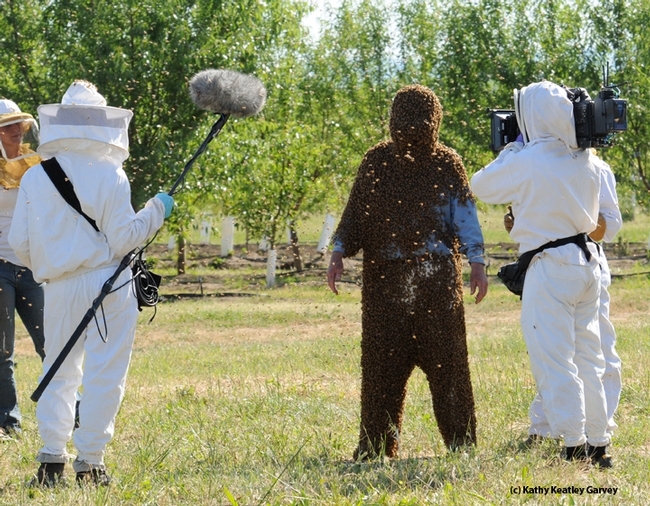
Beekeeper Rick Schubert, who lost his farm and bees in the Aug. 19th Vacaville fire, provided the bees for UC Davis professor Norm Gary's research and bee wrangling for more than 30 years. (Photo by Kathy Keatley Garvey)
The Heartbreaking Story of a Bee Scientist Who Lost Everything
It's heartbreaking. Beyond heartbreaking. Caroline Yelle, 28, owner of Pope Canyon Queens (PCQ) at 8307 Quail Canyon Road, Vacaville, lost her...
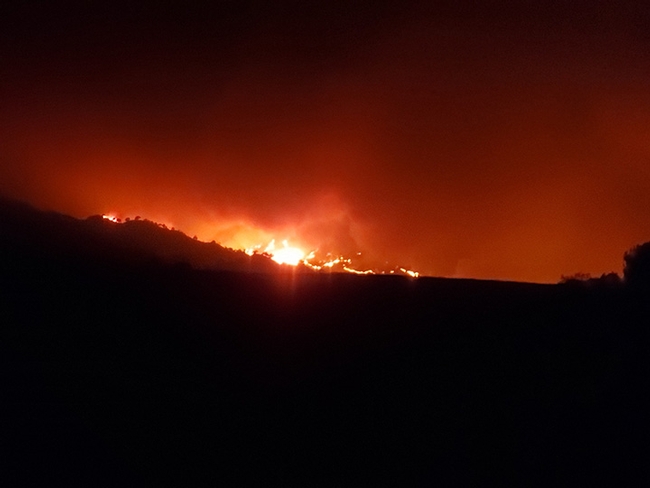
A wall of fire races toward Quail Canyon Road, home of Caroline Yelle's business, Pope Canyon Queens.
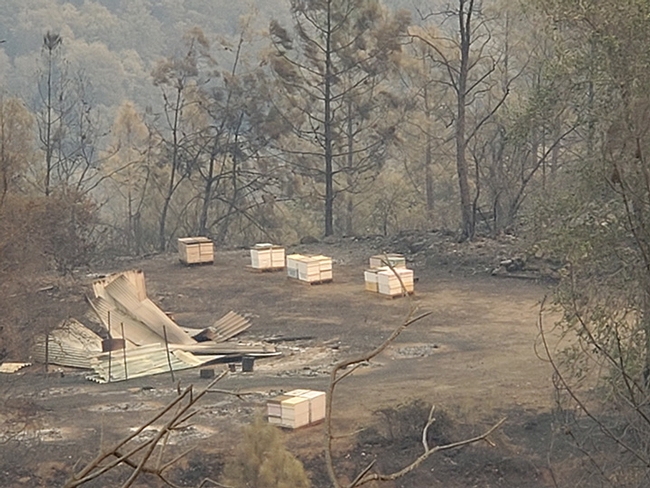
Smoke covers the landscape and the hives of Pope Canyon Queens on Quail Canyon Road. (Photo courtesy of Caroline Yelle)
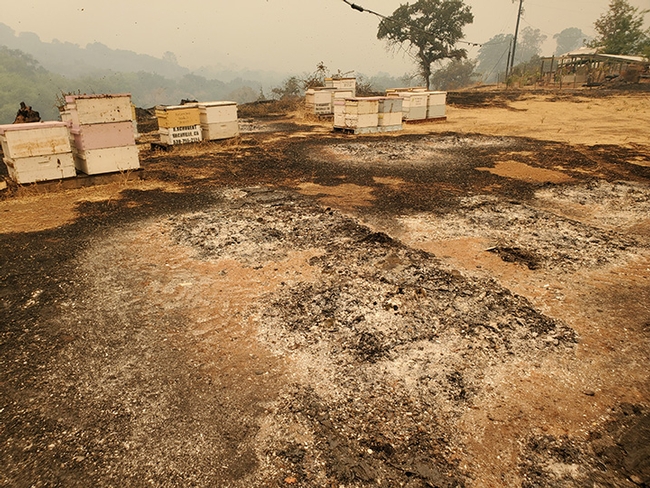
Destruction: The farm at 8307 Quail Canyon Road gone. (Photo courtesy of Caroline Yelle)
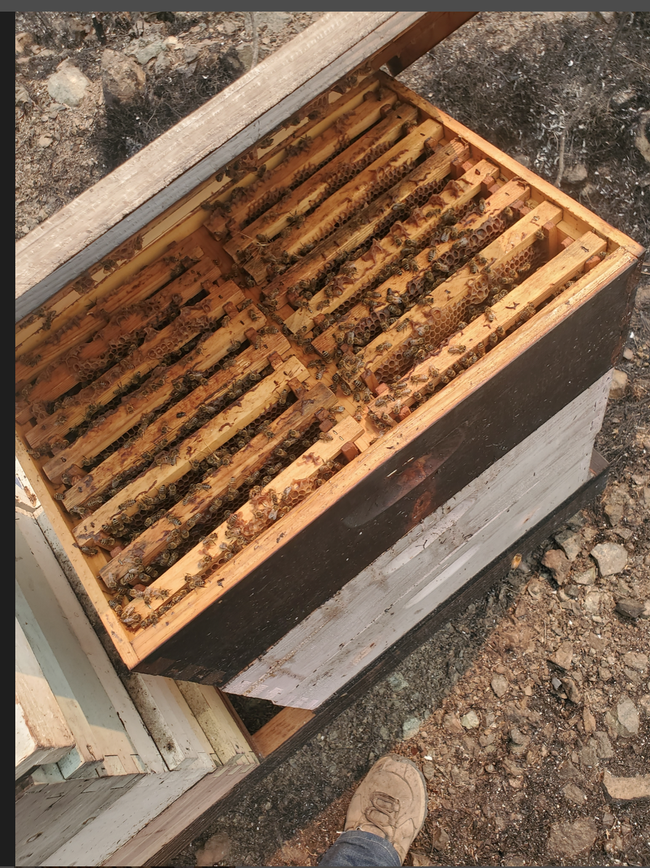
Burned hives of Pope Canyon Queens. (Photo Courtesy of Caroline Yelle)
Insect Apocalypse: Where Have All the Insects Gone?
"Where have all the flowers gone? Long time passing Where have all the flowers gone? Long time ago Where have all the flowers gone? Girls have picked...
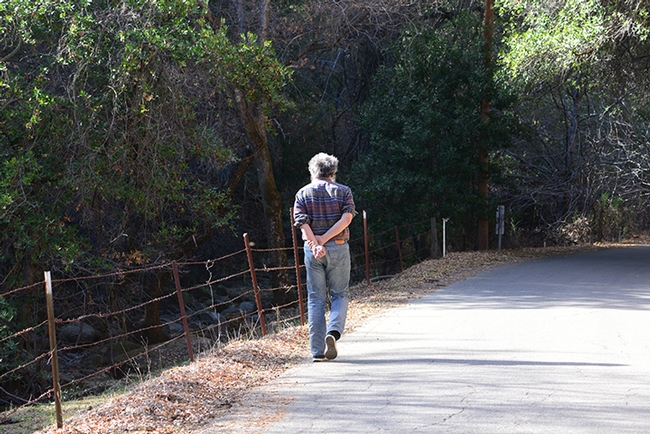
Art Shapiro, distinguished professor of evolution and ecology at UC Davis, walks along one of his study areas, Gates Canyon Road, Vacaville. This image was taken Jan. 25, 2014. (Photo by Kathy Keatley Garvey)
Ever Seen a Mantidfly?
Ever seen a mantidfly, also called a mantisfly? Bohart Museum of Entomology associate John De Benedictis, aka "Moth Man," brought a mantidfly,...
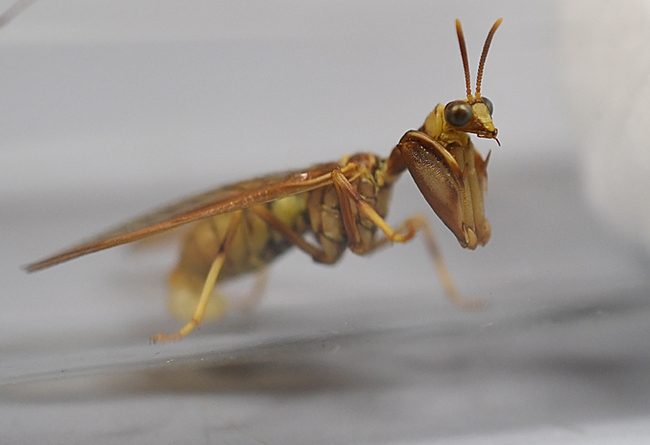
Mantidflies use their front legs to catch small insect prey. This one was collected by John De Benedictis at the UC Davis Stebbens Cold Canyon Reserve. (Snapshot by Kathy Keatley Garvey)
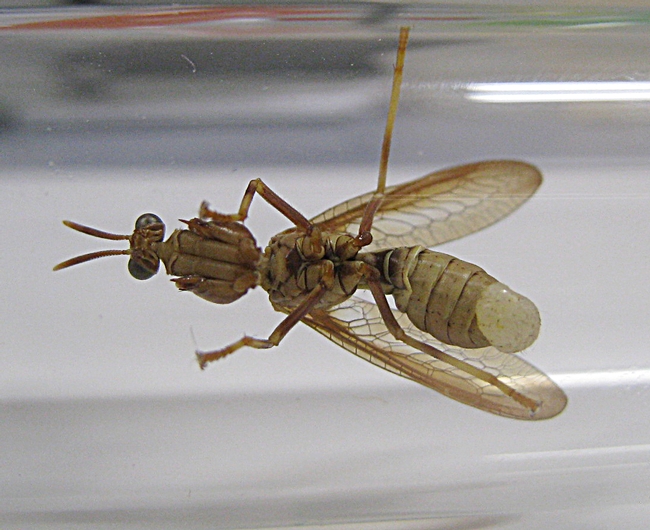
In coloring, the mantidfly abdomen resembles a paper wasp. (Photo by Kathy Keatley Garvey)
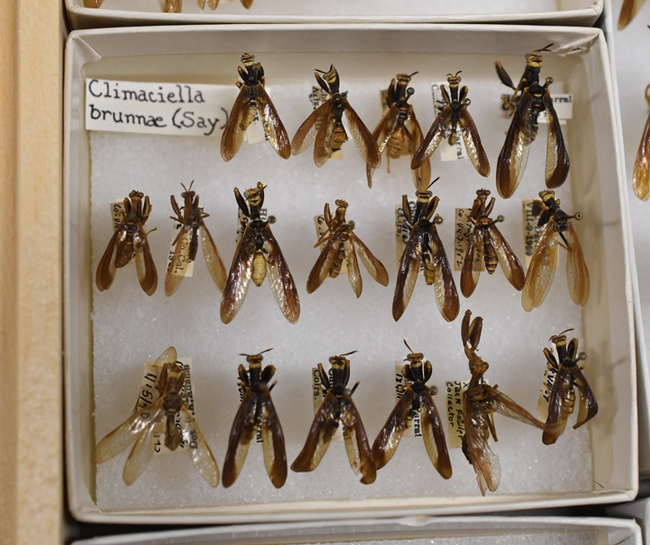
Part of the collection of mantidflies, Climaciella brunnea, at the Bohart Museum of Entomology. (Photo by Kathy Keatley Garvey)
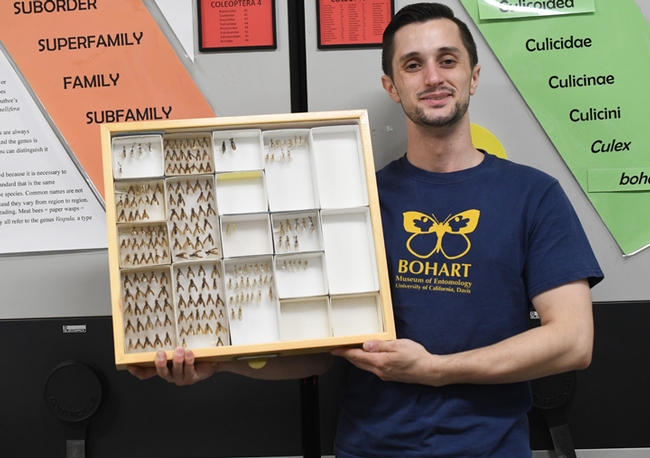
Bohart Museum of Entomology associate Wade Spencer holds a drawer of mantidfly specimens. The museum houses some eight million specimens, collected globally. (Photo by Kathy Keatley Garvey)

